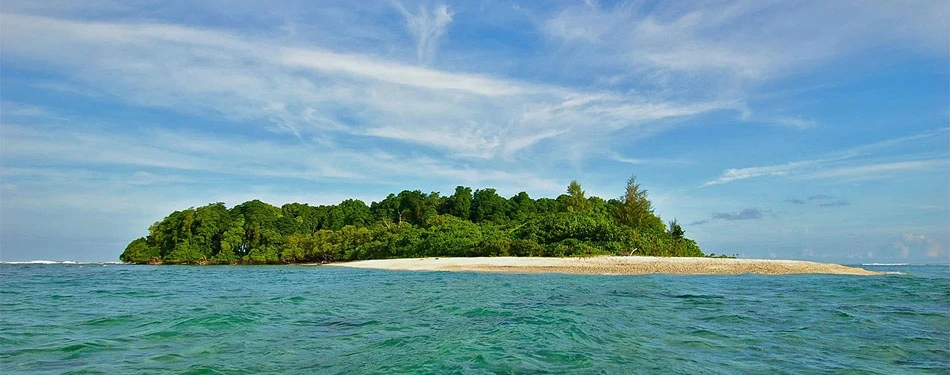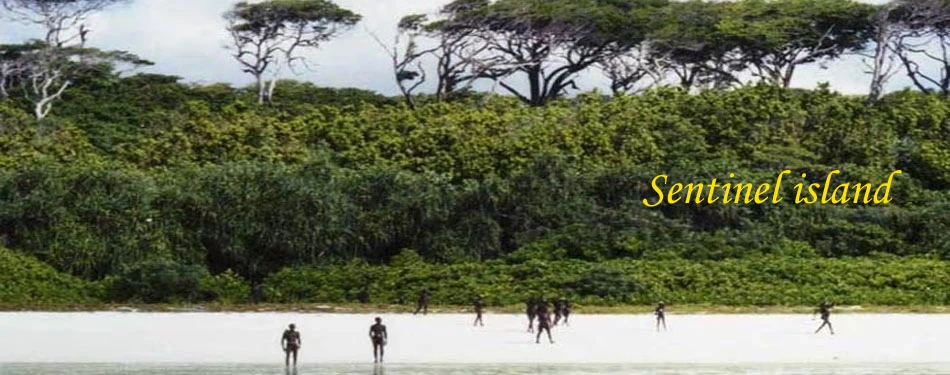Unveiling the Veil: The Enigma of India's Banned Islands

In the vast and diverse expanse of India's territory lies a series of enigmatic lands
that have piqued the curiosity of adventurers and historians alike. These are India's
banned islands, places of untold beauty and mystery, wrapped in the allure of the
forbidden. This blog post lifts the veil on the secrets of the most mysterious island in
India and delves into the reasons why these destinations are among the forbidden places
that you cannot visit, adding a layer of intrigue to the forbidden islands of the world.
The Allure of the Forbidden: India Banned Islands
Among the numerous islands that dot the Indian coastline and its territorial waters, a
few remain shrouded in secrecy, restricted from public access. These India banned
islands are not just geographical entities but narrators of fascinating tales that blend
nature's marvel with human history. Their status as forbidden islands stems from various
reasons, including the protection of indigenous people, conservation of unique
ecosystems, and security concerns.
North Sentinel Island: The Most Mysterious Island in India
North Sentinel Island, part of the Andaman and Nicobar Islands archipelago, epitomizes
the concept of a forbidden island in India. Home to the Sentinalese, one of the world's
last uncontacted tribes, this island represents a living snapshot of early human
history, untouched by modern civilization. The Indian government has made it illegal to
approach the island closer than five nautical miles, in a bid to protect the tribe from
external threats and diseases to which they have no immunity. The mystery that cloaks
this island and its inhabitants makes it the most mysterious island in India, a place
where time stands still.
The Strategic Sentinel: Lakshadweep's Banned Islands
In the Arabian Sea, the Lakshadweep archipelago harbors its own set of restricted
islands. Unlike the Andaman and Nicobar Islands, the reasons here are predominantly
strategic and environmental. Certain islands serve as key locations for the Indian Navy,
hence restricting civilian access. Additionally, efforts to preserve the delicate coral
ecosystems and marine life have led to limitations on tourism and visitation, marking
them as forbidden places that you cannot visit without special permissions.
Explore further by clicking here
Forbidden Places That You Cannot Visit: The Environmental Edens
India's approach to protecting its unique and fragile environments is evident in its
restrictions on certain islands. For instance, islands that serve as nesting grounds for
turtles or unique bird species are often off-limits to tourists and non-research
personnel. These measures ensure the conservation of biodiversity and the sustenance of
critical habitats, emphasizing the balance between exploration and preservation.
The Enigma of Barren Island
Barren Island, home to South Asia's only active volcano, is another gem in the list of
India banned islands. While not completely forbidden, access is highly regulated. The
island's volatile nature and the need to study geological activity without human
interference make it a place of scientific interest rather than tourist attraction. The
occasional plumes of smoke and lava that decorate its landscape add to the island's
mystique, making it a fascinating subject for those intrigued by nature's raw power.
Why These Islands Remain Forbidden
The reasons behind the status of these islands as forbidden places vary significantly.
From the need to protect indigenous populations and preserve ecological balance to
ensuring national security, the rationale is complex. The intrigue surrounding these
forbidden islands of the world, especially in India, lies not just in their beauty or
mystery but in the principles of ethical exploration and respect for nature and human
rights that their protection underscores.
The Fascination with the Forbidden
The allure of India's banned islands lies in the human psyche's natural curiosity about
the unknown and the allure of exploration. While the forbidden island in India like
North Sentinel Island or the environmentally sensitive zones in Lakshadweep stir our
imagination, they also serve as reminders of the responsibilities that come with
discovery and the importance of respecting boundaries, both for the sake of conservation
and cultural preservation.

Find out Andaman best tour packages
Conclusion: A Respectful Distance
As we unveil the secrets of India's banned islands, we are reminded of the delicate
balance between curiosity and conservation, between exploration and exploitation. These
islands, with their untouched beauty and hidden mysteries, invite us to reflect on our
role as explorers of this planet. They teach us that some secrets are meant to be kept,
some places revered from afar, and that the true beauty of the forbidden lies in its
ability to remain untamed and untouched. In a world that is constantly shrinking under
the weight of human footprint, India's forbidden islands stand as bastions of the wild,
the unknown, and the protected, reminding us that some beauties are to be preserved, not
possessed.

